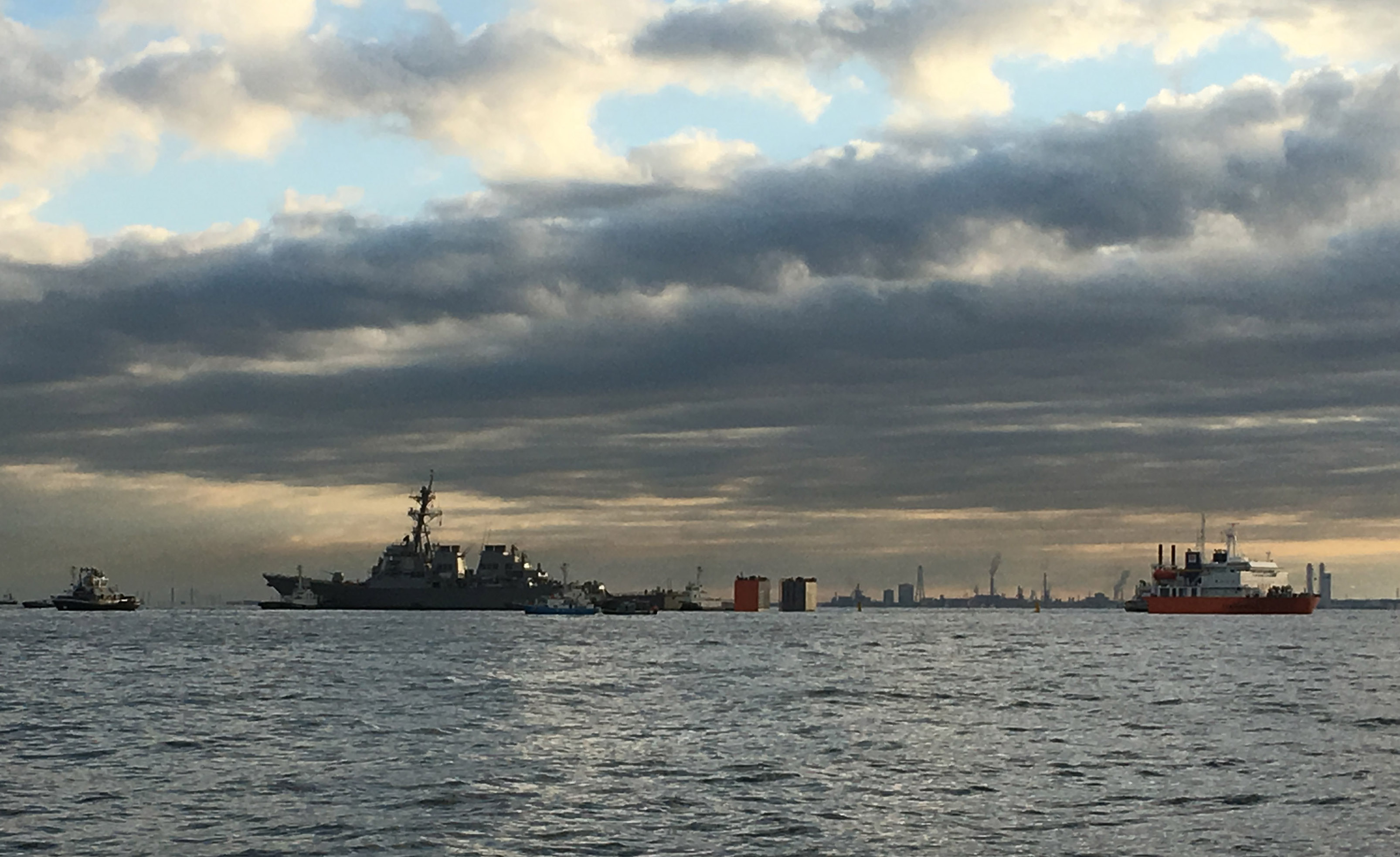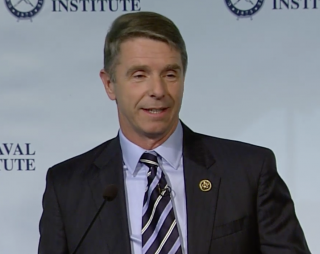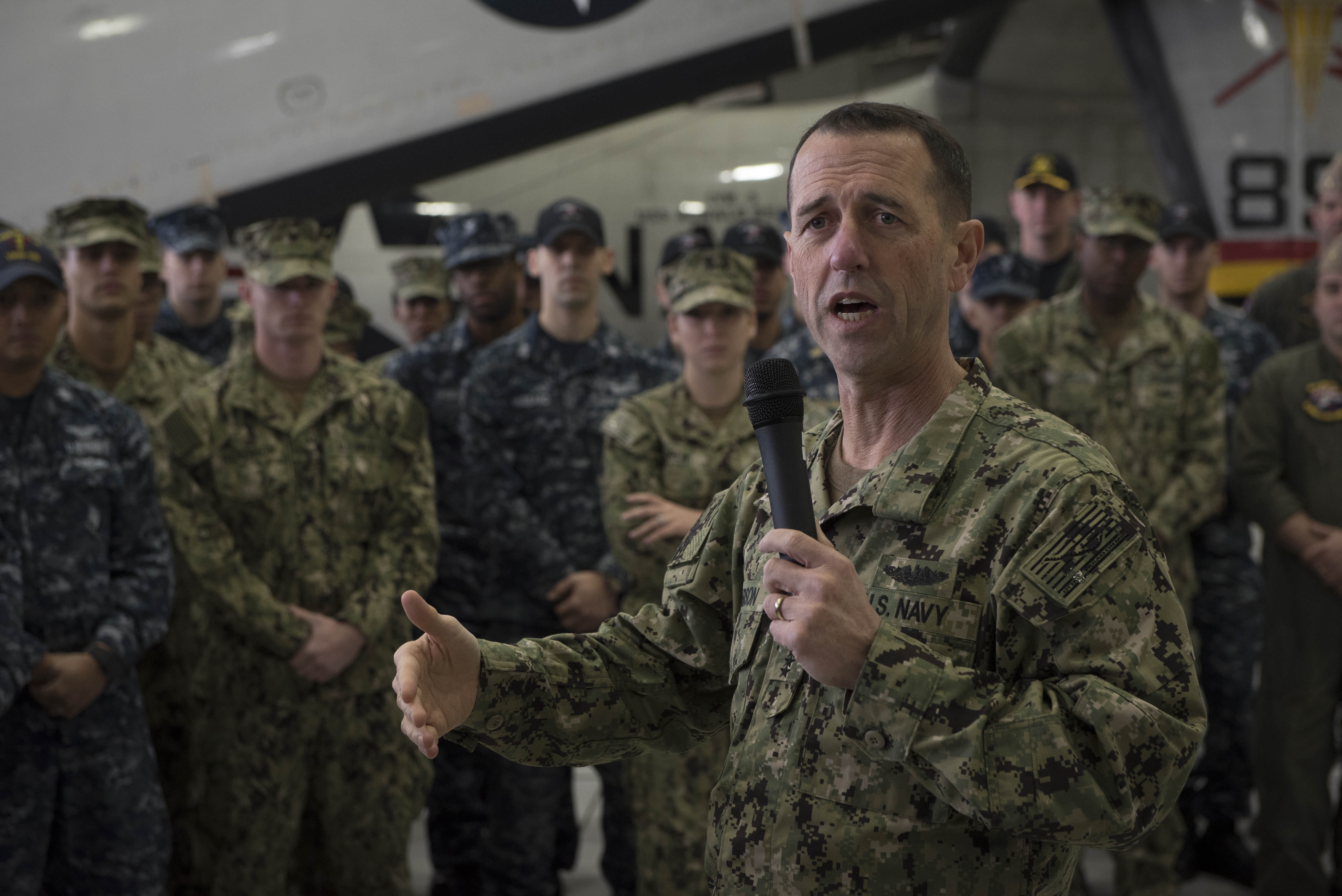
ARLINGTON, Va. – Two lawmakers today said the Navy needed to make “groundbreaking” changes in how it operates to avoid the readiness problems that contributed to last year’s fatal surface collisions that killed 17 sailors.
House Armed Services Committee members Reps. Rob Wittman (R-Va.) and Mike Gallagher (R-Wisc.) talked to a room of Surface Warfare officers on proposed changes in how the Navy organizes its surface force, handles maintenance and certifications of its ships and thinks and speaks about its capabilities, in the aftermath of two reviews the service undertook after the 2017 collisions of USS Fitzgerald (DDG-62) and USS John S. McCain (DDG-56).
Speaking at the Surface Navy Association’s annual 2018 symposium, Wittman, who chairs the HASC seapower and projection forces subcommittee, said he had spoken extensively with Navy Secretary Richard V. Spencer about organizational changes to the fleet based on the Strategic Readiness Review that Spencer directed and a Comprehensive Review of Recent Surface Forces Incidents led by U.S. Fleet Forces Command.
“We have this mentality of an East Coast navy versus a West Coast navy, and that has to be put aside,” Wittman said. “

The subcommittee chairman said that would require revisiting the longstanding “Inouye Amendment,” named after the late senator from Hawaii, Dan Inouye, which forbid the East Coast U.S. Fleet Forces Command from taking over manning, training and equipping of U.S. Pacific Fleet forces.
Wittman also supported a reorganization proposed in Spencer’s Strategic Readiness Review to reestablish U.S. 2nd Fleet in Norfolk and to get rid of U.S. 4th Fleet that oversees operations in Central and South America.
Today’s 3rd Fleet produces ready forces for the Pacific but has also taken a larger role in commanding and controlling forces throughout the deployment. A future 2nd Fleet could do the same, preparing deployable forces on the East Coast and hold operational control as needed. If combined with the idea of eliminating the Inouye Amendment, U.S. Fleet Forces Command would not have to directly oversee the pre-deployment training of East Coast units – 2nd Fleet would do that – but could instead focus on Navy-wide policy and funding as it relates to manning, training and equipment.
Wittman suggested that the Navy revisit some other fundamentals, too, to ensure properly trained, maintained and certified operating forces.
He suggested that all Forward Deployed Naval Forces ships return stateside every seven to 10 years for deep maintenance – a policy that the Navy already has but is not always followed, as evidenced by McCain, one of the ships that suffered a fatal collision last year, having spent more than 20 years forward deployed in Japan.
“What’s happened with that is we’ve seen a 50-percent increase in severe material casualties in forward locations. That’s troubling,” Wittman said.
“Keeping ships there for 20 years, as good as the work that happens in Yokosuka is, is not enough to make sure we are reestablishing the material readiness of those ships.”
Additionally, he noted that Board of Inspection and Survey (INSURV) reports used to be unclassified and but have been classified for almost a decade.
“During peacetime INSURVs should be declassified, and that makes sure there’s transparency there that we know what’s going on,” Wittman said.
“That creates, again, that direction, that focus to make sure that maintenance is being done, maintenance availabilities aren’t being missed, material readiness is being maintained. All those things are critical.”
“All of us have to look at this as an opportunity to really do some groundbreaking things in how the surface navy operates,” Wittman said.
“It doesn’t hurt for us to get to points where we feel a little uncomfortable – in fact, I would argue we have to get to a point where we feel uncomfortable to make sure we are exploring all the different avenues that we have to explore.”
Chief of Naval Operations Adm. John Richardson told USNI News this week that the Navy is undertaking an effort to combine the two reviews and work out remaining areas of difference in their recommendations. Wittman said HASC was allowing that process to play out but would also be a partner in collaborating on what he called “this reformulation, this redirection for the surface navy.”

Rep. Gallagher spoke of another fundamental challenge the Navy needs to quickly overcome: it has for over a year now said it needs a 355-ship fleet, but hasn’t explained what it would do with that fleet and how those additional ships would alter how the Navy conducts its business.
“The Navy needs to be able to honestly explain to itself what it will do with 355 ships and how this will be different from the fleet today. It’s not enough to bring new technologies to bear; our warfighting doctrines must change, our culture must be a learning culture, and at the same time we must ensure that technology does not become a crutch,” he said.
Gallagher also outlined what he sees as a failure in the service’s strategic communication efforts.
“We need more than the usual talking points, generic warnings of risk, and the same communications policy that has left us seven years into the [Budget Control Act] and more than three decades removed from the last major naval recapitalization with no end in sight,” he said.
“The Navy must tell its story in a way that inspires and mobilizes popular action, explaining how the future fleet will fight, how it will be different than the Navy of today, and how it will meet our security needs.”
He cited the “41 for Freedom” drive for ballistic missile submarines in the late 1950s as an example of successful Navy strategic communication and public outreach – an effort that spanned not only seven years of shipbuilding but also the life of the boomers.
In today’s budget environment, if the Navy is ever to be successful in obtaining larger shipbuilding budgets to support that 355-ship fleet the service says it needs, “we need a groundswell of public attention and interest that will force my colleagues who don’t closely follow these issues to help play a constructive role,” he said.
“I want to hear pressure from my constituents about key Navy priorities. I want my colleagues to get calls and letters and office visits about Navy issues, in the same way they do about all the other things we care about, whether it’s DACA or the tax bill or health care.”

“I read with great concern public reporting on a memo from last March that focused on a less-is-more approach to strategic communications,” Gallagher said.
“I cannot emphasize how catastrophic a mistake that is. Despite the old adage that loose lips sink ships, nonexistent strategic communications can sink entire navies. If the bias is towards silence to prevent adversaries from finding out about unique capabilities or potential weaknesses, guess what, there will never be a public constituency for acquiring or mitigating them. And oh, by the way, our adversaries probably have a decent idea of what we’re up to anyways.”





